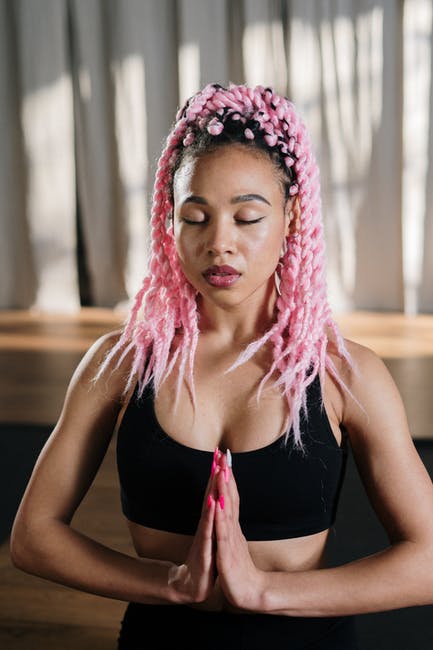What Are the Different Types of Yoga?

Yoga is an ancient art and spiritual practice that has been popularized in modern times. Yoga dates back to 5,000 years ago in India. The effects seen back then align with the effects from current practice.
The benefits of yoga are pretty endless. Yoga improves flexibility, balance, coordination, and strength. It also plays a role in increasing mindfulness and consciousness. Yoga is good for managing stress, increasing energy, winding down at bedtime, and for some – connecting to God.
If you’re overwhelmed by all the different types of yoga out there, don’t worry. This guide will walk you through the basic kinds of yoga so you can determine which practice, or combination of practices, is right for you.
Different Types of Yoga: Hatha Yoga
Hatha yoga is a common form of yoga associated with slower, controlled movements in connection with the breath. Hatha yoga refers to a lot of types of yoga and is the perfect yoga for beginners to practice.
Hatha yoga refers to the balance of opposing forces, or the balance between the sun and the moon. Hatha etymologically means the sun and moon, or also means force. Due to the meaning of the word hatha, the practice can be energizing or grounding.
Hatha yoga practices use asanas or poses to be aware of the breath, focusing on each inhale and exhale. This relationship with the breath cultivates a greater awareness of how the body feels. When used in grounding moon hatha yoga, discipline is created by breathing through potentially uncomfortable postures.
Hatha yoga greatly focuses on your intentions and awareness. The practice is a time to be present and drop into the current moment. This is a great practice for anyone needing to destress or people who experience anxiety.
Practicing hatha yoga can have lasting effects where one’s awareness expands beyond yoga class.
Kundalini Yoga
Among the different types of yoga is kundalini yoga. Kundalini is believed to be a life force energy that originates in the base of the spine. Kundalini yoga is practiced to activate and thus channel this energy upwards through the chakras to be used as divine, spiritual energy.
Kundalini yoga may not resonate with everyone. It’s a great practice for those wanting to connect with their spiritual side while reducing stress and getting familiar with their own energy.
A typical kundalini practice looks like this:
- Start with a mantra
- Warm-up spine
- Breathwork with yoga poses
- Closing meditation, chant, or song
You can see that kundalini yoga combines different ideas than just yoga poses. It emphasizes the power of the breath. Mantras and chants are used to alter the brain out of beta brain waves and into an alpha or theta brain wave state.
Beta brain waves are typical during wakefulness, stressful activity, and logical decision-making. Both alpha and theta brain waves occur when deeply relaxed or in a meditative state. A sense of calmness and oneness occurs in the person presenting the activation of these brain waves.
Kundalini yoga focuses on shifting the mind and body towards a calmer, more present, and connected state of being through these mantras, chants, conscious breathing, and poses.
Vinyasa Yoga
Vinyasa yoga focuses on pairing movement with each breath. Breath is, of course, important to every yoga practice, but with vinyasa, in particular, you move the body through a new asana with each inhale or exhale.
Vinyasa focuses on the natural flow and power of the breath. Vinyasa flow is a meditative practice. Because you have to focus on a new movement with each inhale and exhale, the mind is focused solely on the practice.
Vinyasa is good for getting yourself into a creative, calm, flow state. This is the perfect practice for artists, writers, and creatives in general.
Ashtanga Yoga
Ashtanga yoga is a type of repetitive yoga that focuses on a series of six poses practiced in order. In traditional terms, a yoga teacher would give out a new series of poses when a student has mastered the first series of poses.
However, for modern-day purposes, ashtanga yoga classes are taught to be followed along with. Similar to vinyasa yoga, ashtanga yoga typically uses the breath to guide each new movement in tandem with your inhale and exhale.
Ashtanga yoga is a good practice for staying moving, gaining flexibility, warming the body up, and regulating temperature.
Yin Yoga
Yin yoga is a slower style of yoga meant to rest in each asana for a minute or longer. Yin yoga increases flexibility, relieves stress, circulates blood flow, and releases emotions.
It is said in yogic beliefs that emotions are stored in the hips. Yin yoga focuses on deep hip stretches to release these emotions that are causing blockages. Many people have burst into tears from intense yin yoga classes.
Combining yin yoga with an intention helps bring that intention to manifestation. Sometimes the teacher may have something specific for you to focus on, but whatever you want to let go in your life should be contemplated and intentionally planned on releasing during a yin yoga flow.
These yin yoga exercises can be intense, but they are effective for people experiencing unprocessed trauma, going through new life changes, or having a hard time managing their emotions. Revelations often occur through the resilience that is built in the stillness of each asana.
Conclusion
These are only some of the different types of yoga that exist. If one of these practices is calling your name, try out taking a few classes a week. Staying consistent in your routine will provide the fullest benefits you can get from yoga, no matter what you’re aiming to get from the class.
Start a membership at Fitness CF to stay disciplined, build resilience, and try many forms of yoga.







